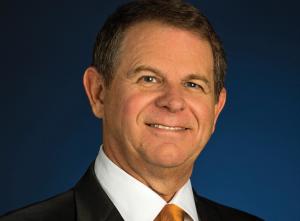I. Rob Manning, EPRI’s Vice President – Transmission and Distribution

“This is the second study of the detonation of a high-altitude nuclear weapon that generates an electromagnetic pulse — an EMP — on the face of the Earth. The first study we did was on the effects of an E3 blast with the Earth's magnetic field, on transformers, and on the power grid. E3 is the third wave of electromagnetic pulse.
We advanced that study to look beyond transformers, to look at what the other impacts might be on the power grid. The conclusion of the study was that we would certainly expect to see some impact from a high-altitude nuclear blast from an EMP E3 wave.
We would expect that would likely create some regional disruptions, what we call voltage collapse. It's the inability of the system to sustain a normal level voltage, so it collapses; the system will automatically fail-safe to protect the equipment.
Our study would indicate that type of scenario is likely to occur on a regional basis. It appears that the effect would not result in a nationwide voltage collapse. That does put us in a position to be able to recover much more quickly…
A high-altitude nuclear burst will generate three energy waves that move towards the Earth's surface. That is, if it's a sufficient-sized weapon and at a sufficient altitude.
E1 is very fast, in nanoseconds, and it's characterized as a very high electric field. We measure that in volts per kilometer. It looks like a very high pulse of energy that moves towards the Earth at the speed of light. It's followed in milliseconds by E2, which looks a lot like lightning. The grid already has a lot of protection against that.
The third, E3, is the interaction of the blast with the Earth's magnetic field. It generates currents that appear like direct currents on our alternating current system. This creates a lot of challenges for an alternating current system. It's an effect similar to a solar storm. It’s a much shorter duration than a solar storm, but with much higher field levels than solar events…
We started with E3 because of the potential for equipment damage. We're moving towards E1. We've been working on E1 for some time now. E1 would be more targeted towards electronics and challenges with control systems and electronics.”
II. Kelly Speakes-Backman, Energy Storage Association’s CEO
“The cost of storage has dropped so much faster than most predictions. The installed cost of battery grid storage has dropped fifty percent in the last four years, and that rate is likely to continue for the next several years.
The result is that storage project economics are increasingly competitive. We’ve just seen from the Xcel Colorado all-source solicitation, median bids reported for combined wind & storage PPAs were $21/MWh, and solar plus storage PPAs were at $36/MWh for delivery before 2023.
Also, as costs have come down, new megawatt-scale battery storage projects are being delivered with longer durations. Aliso Canyon made big news in 2017 with over ninety MW of four-hour batteries deployed to make up capacity shortfalls. There are already two eight-hour grid battery projects under development in New York and Massachusetts in 2018.
The comprehensive trend we’re seeing is that as costs come down, durations will grow and storage will be a more competitive resource for new capacity.
That ties into the second big trend: utilities are increasingly including storage in their planning and procurement. Since the first utility integrated resource plan meaningfully included battery energy storage in 2016, we’ve now seen a dozen utilities across eight states earnestly consider energy storage for future capacity, more often selecting it as an economic resource than not.
At the same time, more state regulators are directing their utilities to look at storage in long-term planning. Commissions in Washington, New Mexico, and Michigan have explicitly directed their utilities to do so, and Washington, in particular, made it an explicit part of their prudency determinations.”
Is your organization impacting the debate as a member of the PUF community? Nearly two hundred utilities, commissions, consumer advocates, associations, agencies, professional firms and vendors are members. How about yours?
Steve Mitnick, Editor-in-Chief, Public Utilities Fortnightly
E-mail me: mitnick@fortnightly.com


